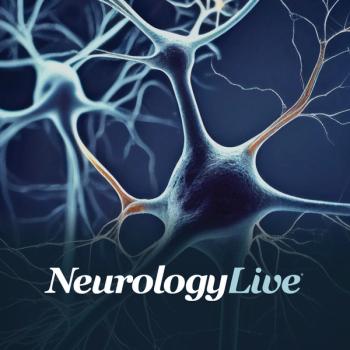
Raising Awareness About NMOSD
Mayo Clinic’s Brian G. Weinshenker, MD, compares multiple sclerosis with neuromyelitis optica spectrum disorders (NMOSD) and explains why community neurologists need to receive more education on NMOSD risk factors and symptoms.
Episodes in this series

June Halper, MSN, APN-C, MSCN, FAAN: Hello, and thank you for joining this Neurology Live® Cure Connections® program titled “Managing Neuromyelitis Optica Spectrum Disorder.” I’m your host, June Halper, a certified adult nurse practitioner and a specialized in multiple sclerosis since 1978. I’m the CEO [chief executive officer] of the Consortium of Multiple Sclerosis Centers, an organization that has a unique role and a model in MS care. I’m joined by Dr Brian Weinshenker, a consultant and a professor of neurology at the Mayo Clinic in Rochester, Minnesota; Jacinta Behne, the executive director of the Guthy-Jackson Charitable Foundation in Beverly Hills, California; and Doug and Kim. It’s so nice that you’re here to share the details of their personal journeys with neuromyelitis optica. Thank you for joining us. Let’s begin.
Dr Weinshenker, it’s nice to work with you again. We’ve worked together on this topic for a long time and now it’s time for us to share the details of something that has been of great importance to us for many years. Can you please tell us what NMOSD [neuromyelitis optica spectrum disorder] is? How is it different from MS, which is where I started, and more about its characteristics, such as hereditary, familial, and how common it is?
Brian G. Weinshenker, MD: Thank you very much for inviting me and for getting this organized, June. We appreciate it, and I’d also like to acknowledge the excellent work of the Guthy-Jackson Foundation, which has really catalyzed research and neromyelitis optica and helped bring to us a number of the treatments that we’ll be talking about.
Neuromyelitis optica spectrum disorder, the official name for this condition, is an inflammatory condition of the central nervous system that targets the optic nerves, which are involved in vision and the spinal cord. It’s considered an autoimmune condition, and in that sense is quite similar to MS, which is also an autoimmune condition that can affect the optic nerves and spinal cords. In fact, those are the most common adverse effects in multiple sclerosis, especially early on. But neuromyelitis optica is somewhat distinct because of the severity of the attacks that occur and because this condition is somewhat more selective than multiple sclerosis for the optic nerves and the spinal cord, although we’ve learned it’s not entirely selective, as we’ll discuss later.
It’s less common, at least in Western countries, compared with multiple sclerosis. Multiple sclerosis affects 1 in 500 to 1 in 1000 people, whereas neuromyelitis optica spectrum disorder affects about 1 in 20,000 individuals. But in some countries, especially Asian countries, neuromyelitis optica is the dominant form of MS-like illness. It’s more common than MS. It depends on the country 1 is looking at. We don’t really know the cause. We believe it’s an autoimmune condition. In fact, we recognize a specific antibody that was discovered at Mayo Clinic in a collaboration by Dr Vanda Lennon and myself in in 2004. It’s being used as a helpful diagnostic test to recognize this condition, and now we can make the diagnosis at a very early point after the first symptom by testing for this antibody. If a patient has optic neuritis or myelitis, which is spinal cord inflammation, and has a positive test for this antibody, we have a confident diagnosis of neuromyelitis optica spectrum disorder.
June Halper, MSN, APN-C, MSCN, FAAN: Is the antibody to identify spinal fluid, or is it a blood test?
Brian G. Weinshenker, MD: The antibody is thought to be mainly produced in the blood, and the blood is the best place to test for it because the concentrations are highest. Of course, it’s easier to send a blood test than a spinal fluid test, but we can detect it in both types of fluid, in blood and spinal fluid. In very rare situations, spinal fluid testing may offer some advantages. But in the vast majority of patients, we can detect this antibody reliably in the blood, and that’s the first place to test.
June Halper, MSN, APN-C, MSCN, FAAN: Would a community neurologist recognize this disorder, or is this something that’s mainly in a specialist center such as the Mayo Clinic?
Brian G. Weinshenker, MD: We work very hard to understand, recognize, and teach all neurologists. The specific red flags that 1 should keep in mind with optic neuritis is that because it’s an inflammation of the optic nerve, it causes fairly sudden impairment of vision or maybe total loss of vision. Optic neuritis is very common, and it’s certainly, at least in Western countries, more commonly an indication of possible MS than it is for neuromyelitis optica. But we’ve learned that if the optic neuritis is particularly severe, it doesn’t recover well and there is a residual deficit in vision. If the patient is of a demographic that’s more likely to have neuromyelitis optica, like African American or Asian, we know that there’s a greater chance that neuromyelitis optica occurs in 1 of those demographics. AIso, if the brain MRI doesn’t show any indication of multiple sclerosis or the spinal fluid testing doesn’t show oligoclonal bands, which is a very helpful test for multiple sclerosis, then those are all situations in which 1 should be suspicious that this might be neuromyelitis optica and request that antibody test.
June Halper, MSN, APN-C, MSCN, FAAN: Thank you for watching Neurology Live® Cure Connections®. If you enjoyed this program, please subscribe to our e-newsletter to receive upcoming programs and other great content in your in-box.
Transcript edited for clarity.
Newsletter
Keep your finger on the pulse of neurology—subscribe to NeurologyLive for expert interviews, new data, and breakthrough treatment updates.

























